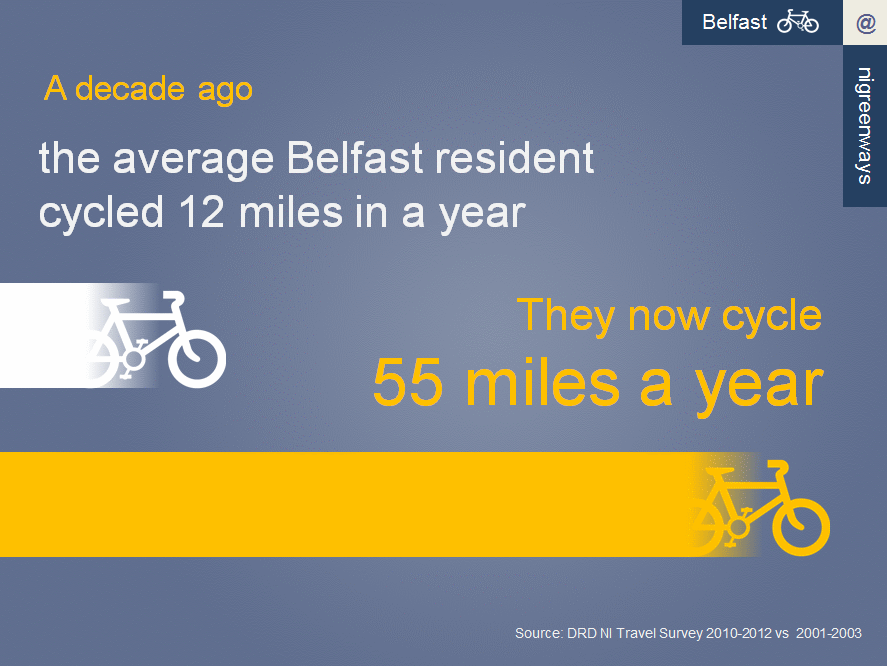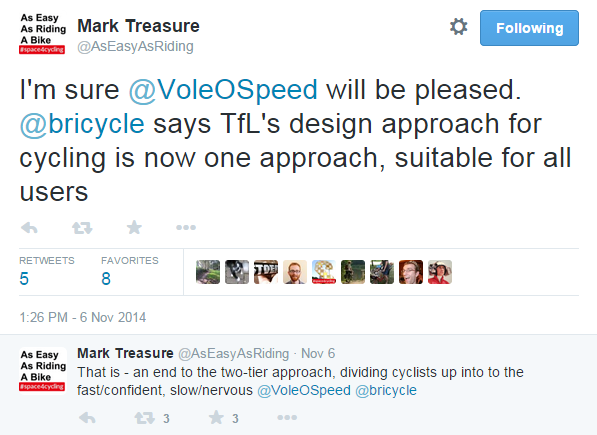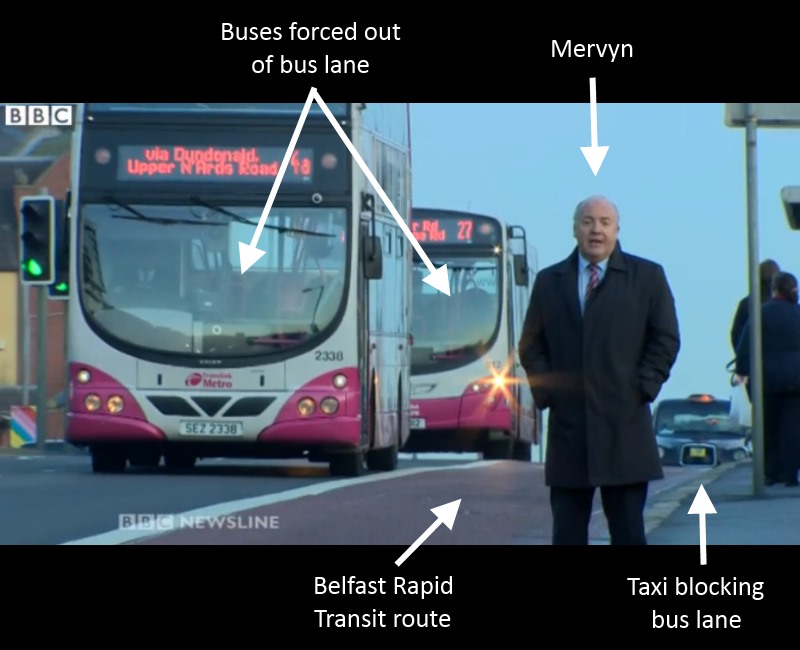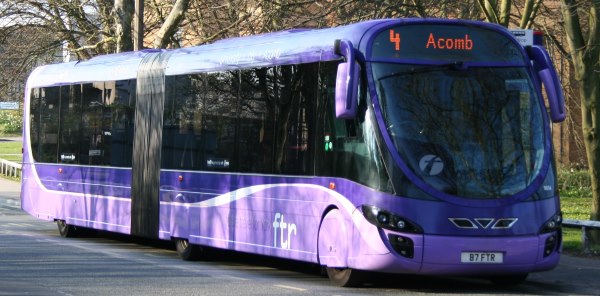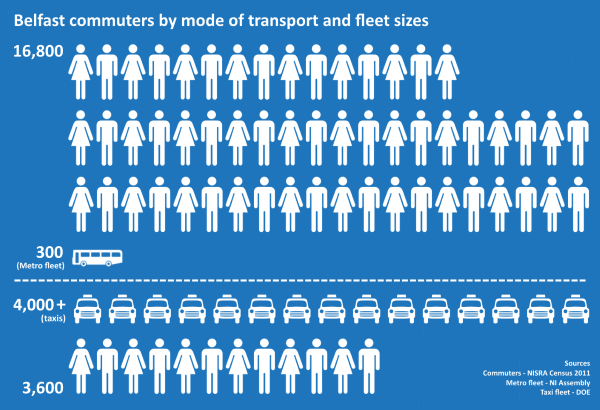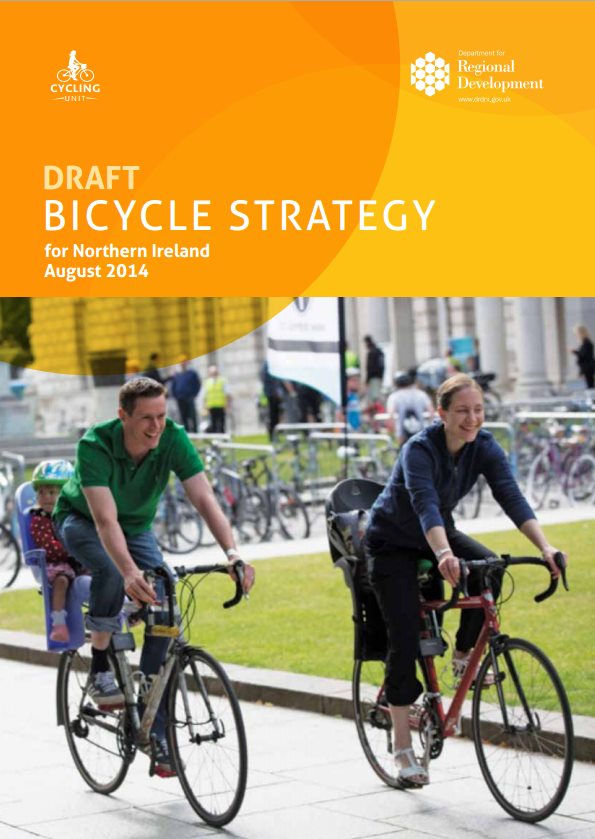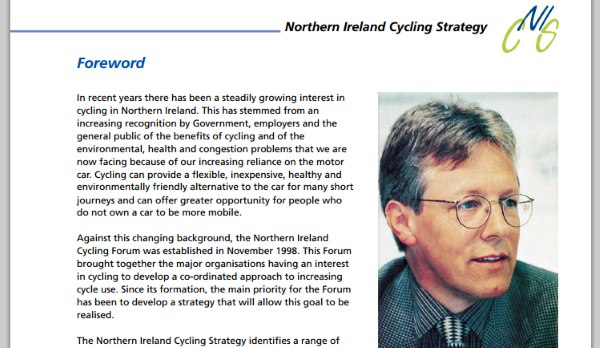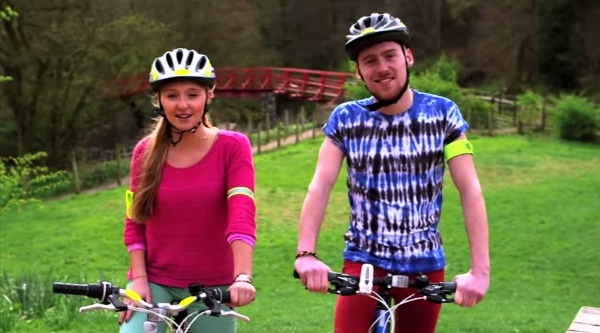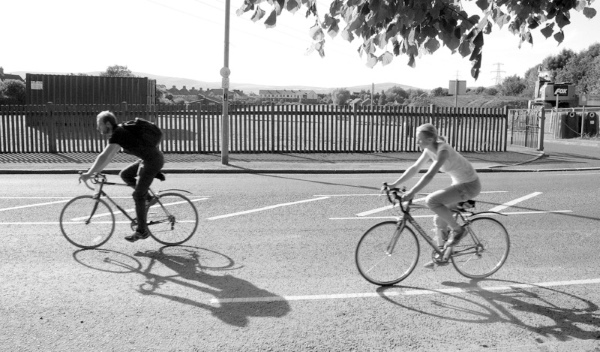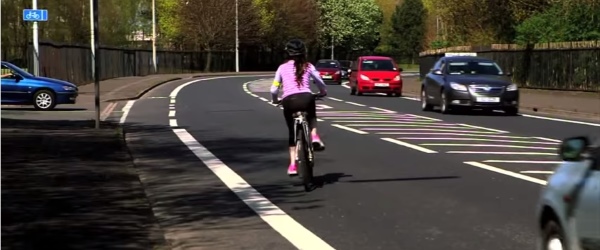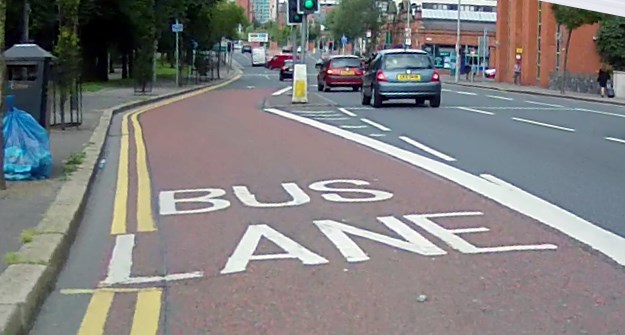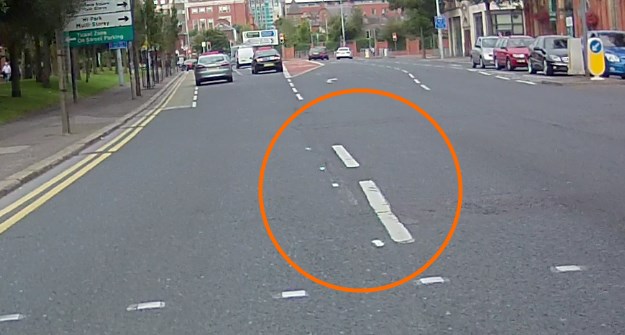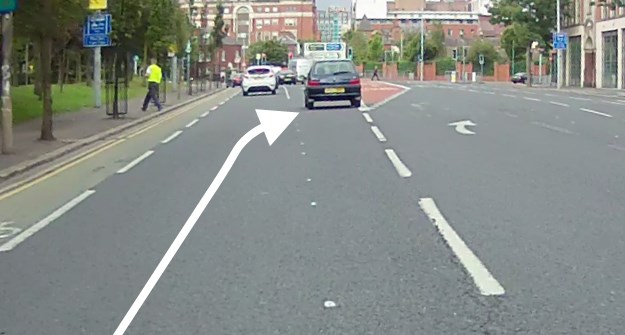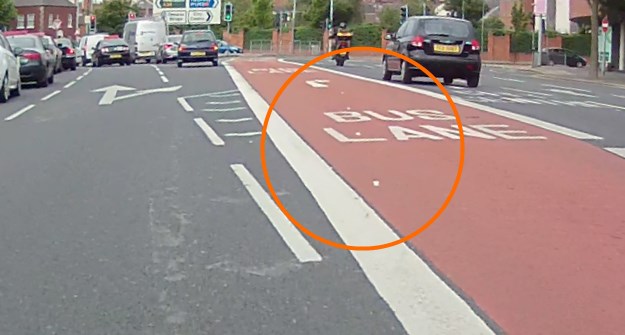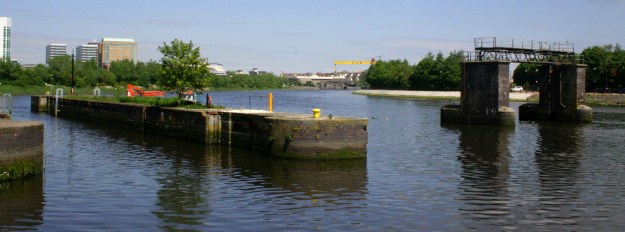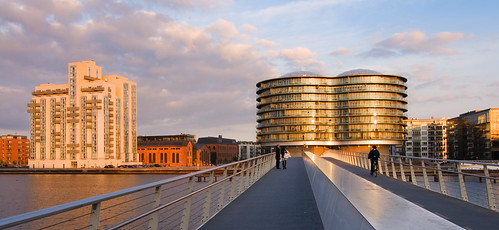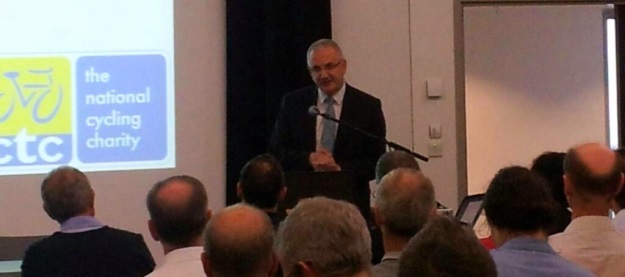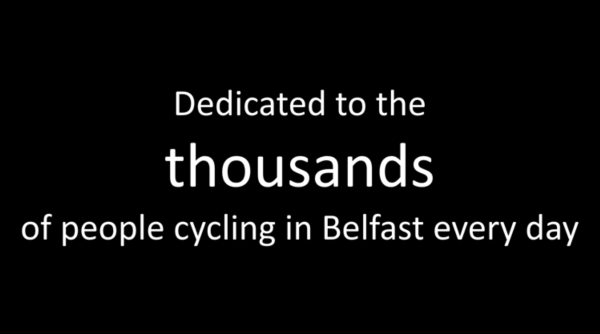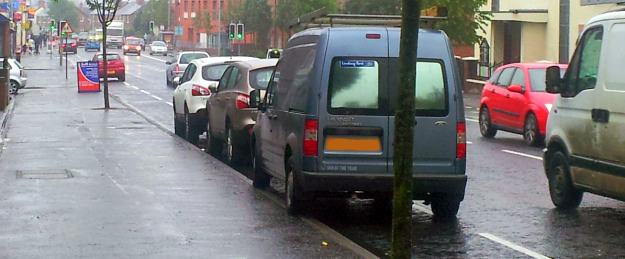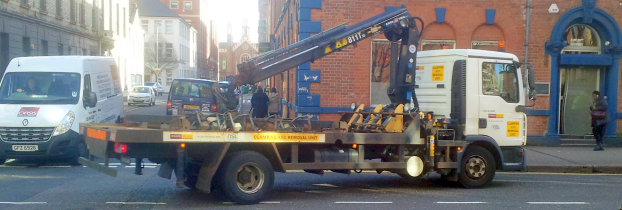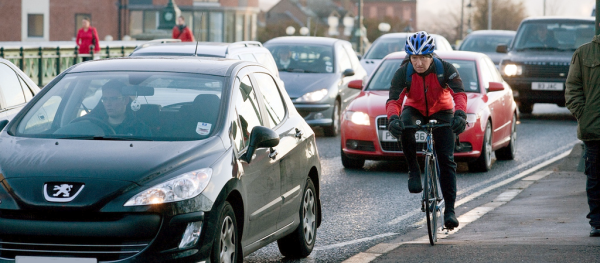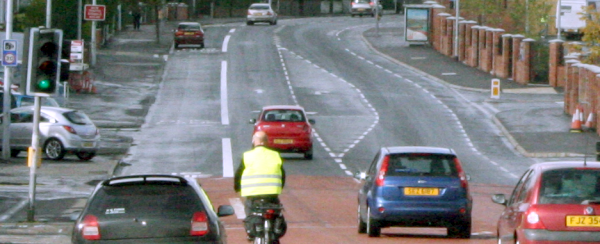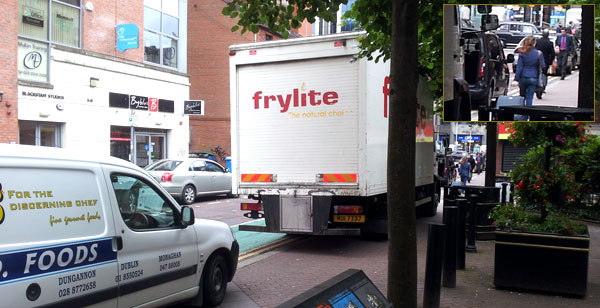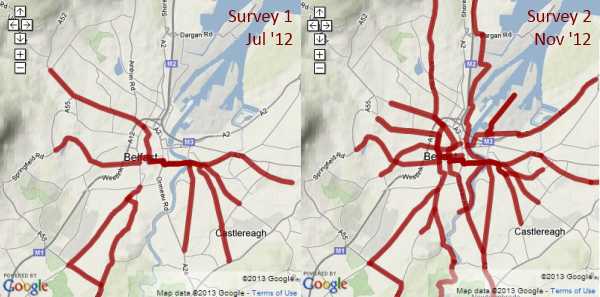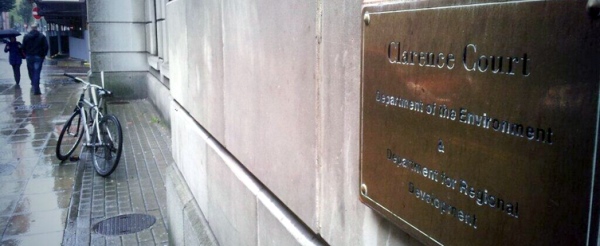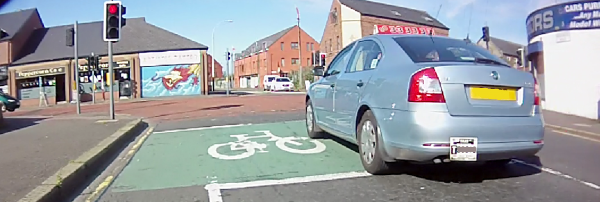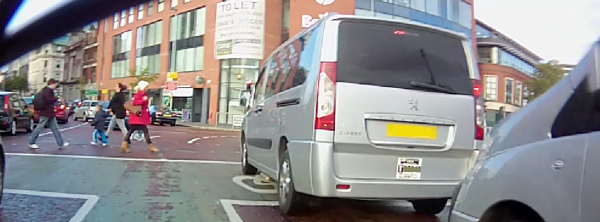The Draft Bicycle Strategy for Northern Ireland needs your input. A public consultation is running until Friday 21st November 2014, and your views will help to determine the path which DRD will plot over the next 25 years to deliver the Cycling Revolution™ in Northern Ireland.
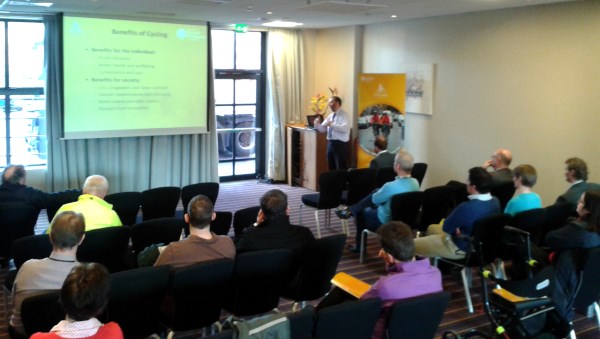
You can read the full Draft Bicycle Strategy for Northern Ireland by downloading it from the DRD website. You can respond to the Draft Strategy a number of ways, listed at the end of this article.
So, what are the hot topics for @nigreenways in the Draft Strategy?
That headline vision statement
“To establish a cycling culture in Northern Ireland to give people the freedom and confidence to travel by bicycle, and where all road users can safely share space with mutual respect.”

A decent start, but it’s a few tweaks away from perfection..
Don’t repeat the past mistake of positioning the Bicycle Strategy as a government-led attempt to cold start growth in cycling. Credit is due to DRD for your work over the last year to create the Cycling Unit and this Strategy, but you are pedalling furiously to catch up with the reality on the ground.
Cycling is on a clear growth curve, even if it remains quite niche as a province-wide activity. An inspired and serious government intervention is needed to push cycling into the mass market. Take this obvious opportunity to put the Bicycle Strategy on the front foot and present a far more efficient vision statement..
“To build on the developing cycling culture in Northern Ireland and create the conditions to give everyone the freedom and confidence to travel by bicycle.”
Sorry, but the twelve words after “bicycle” in your vision is meaningless filler. It sounds like a really bad DOE road safety advert (and there are many of those) and I genuinely believe the DRD Cycling Unit is better than that. Drop it. Inspire us.
Bicycle Strategy or Cycling Strategy?
“We feel that it is significant that this document is called a ‘Bicycle Strategy’ rather than a ‘Cycling Strategy’ as it presents a clear signal that we are planning for a mode of transport, rather than simply the activity of ‘cycling’.”
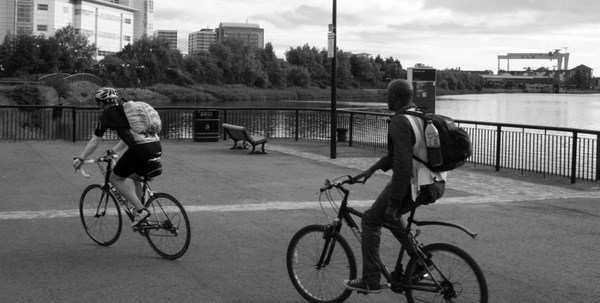
It’s astounding how much precious time and oxygen was wasted at stakeholder consultation events discussing this. Knock yourself out. Moving on..
Design for everyone, or no-one
One section of the Draft Bicycle Strategy for Northern Ireland caught the attention (and ire) of cycling campaigners across the UK and Europe:
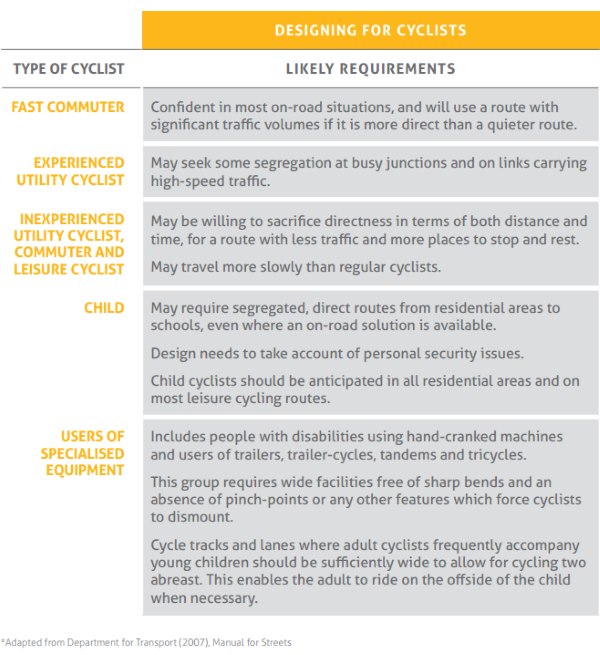
Northern Ireland’s very own Dutch cycling expert Cargobike Dad put it perfectly in his own takedown of this section:
“The table has been adapted from the English Department for Transport, published in 2007 .. if we want to look at best practice we should not look to England 7 years ago. It would better to hold them up as an example of how not to implement a cycling strategy.”
As for those fast commuters, alarm bells should be ringing at DRD when everyday bicycle commuters with decades of experience can’t take the hassle on Belfast’s busiest roads any more..
https://twitter.com/stevenpatt99/status/532246062283882496
What are the logical outcomes of designing for types of cyclists when DRD considers future route development plans? That high-quality separated cycling infrastructure is less likely around workplaces, or on arterial routes? That it’s more likely around schools? How do you measure the demand among different groups in any particular area? Good luck showing me an area in Belfast that is purely dominated by one of these types, especially if the Cycling Revolution™ actually happens.
This section got a roasting back in August..
I was planning to write a pithy tirade detailed explanation of why the inclusion of user profiles is a very bad idea, but I’ll give you a 100% guarantee that this section of the Draft Strategy is going to be quietly dropped for the final version. Why? Fast forward to November and everything changed..
And who is @bricycle? He’s Brian Deegan, Principal Technical Planner at Transport for London who’s worked in project management on the London Cycle Network for the past six years – and one of the speakers at the recent Changing Gear conference, organised by (wait for it) the DRD Cycling Unit..
.@bricycle @TfLOfficial "Only way to make cycling work is create a quality street environment" #NIChangingGear pic.twitter.com/kyTDHAesnB
— NI Executive (@niexecutive) October 16, 2014
The simple principle behind the world’s best cycling infrastructure (also highlighted by Brian Deegan at the conference as being in The Netherlands) is that cycling infrastructure should be designed for everyone to use. To plan a Bicycle Strategy on any other basis puts compromise at the heart of the next 25 years of development.
Cross-government buy-in
“Our ‘cycling future’ is interrelated with a number of other factors .. responsibility for some of these areas sits with other Government Departments or public bodies. For this reason we feel it is vitally important that we work across the sectors to develop and implement this strategy to make sure that the greatest benefits are delivered for everyone.”
https://twitter.com/cvharper999/status/442341953297219584
This is crucial to success – access to the power and influence of the shocking number of government organisations with responsibility for cycling here will determine positive outcomes. Understanding of the needs of cycling development is patchy – eg the Public Health Agency definitely gets it, but the Department for Social Development (leading on public realm projects) does not..
Lovely new green space by Albert Bridge, but wouldn't a separate 2-way cycle track be 'greener'? #DSD pic.twitter.com/P7mX8zJo3N
— NI Greenways (@nigreenways) September 4, 2013
Along with finding guaranteed annual funding for this grand vision, how well the DRD Cycling Unit and the Minister can marshal and direct cycling activities across government will determine the Bicycle Strategy’s success. Which leads us neatly on to..
Aiming.. where exactly?
“We have consciously chosen not to set an arbitrary Northern Ireland wide target for the percentage of people cycling by a nominal date as we do not think it will be useful in encouraging people to use the bicycle as a mode of transport at local level. The Delivery Plan [to follow] will contain a series of specific, measurable, achievable, realistic and time bound objectives, policies and actions. This will form the basis for the monitoring undertaken on the progress made by the Strategy.”
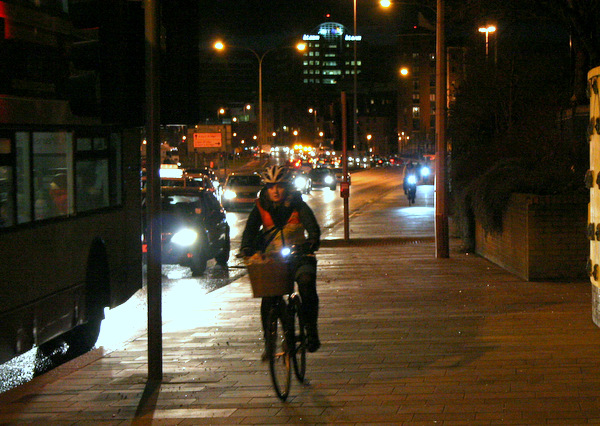
After many discussions I understand (and to some extent sympathise with) DRD’s rationale for not placing an over-arching target within this strategy. The subsequent Delivery Plan, city and local area masterplans will carry the SMART objectives and targets. Grand, and the campaigning corps can’t wait to get its teeth into those plans.
Having no big target(s) may lend flexibility to your work, or could be the biggest flaw in the foundations of the Bicycle Strategy. A big target certainly isn’t “useful in encouraging people to use the bicycle” but it is close to essential in navigating the political stream for 25 long years.
“The Chair and this Committee will know about the challenging financial position that we find ourselves in, particularly next year. But this is a Programme for Government commitment (it’s also a commitment that I’m committed to) and so the necessary finance will have to be effectively ring-fenced for this project to be carried forward. And that is a challenge for this Department, and it’s a challenge for me, but I have to rise to that challenge. And I’ve no doubt that I would rise to the challenge with the support of this Committee, with Executive colleagues, with the Assembly in general and with public opinion..”
Imagine a future Transport Minister defending DRD Cycling Unit infrastructure plans with this robust certainty. This particular issue was about a railway upgrade plan in difficulty, but because it’s in the Programme for Government (PfG) there’s no argument about “if”, just “how”.
Cycling needs its own place among the PfG targets. Splitting by urban/rural, or Belfast/rest of NI makes a lot of sense given the diverging cycling environments. But if cycling infrastructure planning and/or an over-arching growth target is in there after the next election, a mainstream budget will be easier to embed, and suddenly cycling climbs one more step above the day-to-day political fray.
Any country or city serious about #cycling wouldn't need decimal points in targets @nici_chair @citycyclists #NI #Belfast
— NI Greenways (@nigreenways) September 18, 2012
Will a series of area plans with targets and budgets make into the PfG? That’s highly doubtful. Does this risk leaving each plan to fight tooth and nail for survival in a hostile political environment?
So make sure you’re being smart about that target decision, and think about the realpolitik in 2 years, 5 years, 10 years, 20 years from now. Can you make it politically super difficult for the next Minister to roll back on commitments made in the Bicycle Strategy? Can ambitious headline targets foster competition between political parties to build reputations, policy commitments and delivery on cycling? Or will you be kicking yourselves as the vision and aspirations slowly evaporate over the years?
I welcome the Draft Strategy, but more importantly I have faith in the quality of the people who are working in the DRD Cycling Unit. This is a once-in-25 years opportunity to get it right..
To everyone at the DRD Cycling Unit X 🙂 #BicycleStrategy pic.twitter.com/nA66OcBYNj
— NI Greenways (@nigreenways) November 13, 2014
What do you think?
Those were just a few of the key topics covered by the Draft Bicycle Strategy for Northern Ireland. Please do take the time to read it and send your thoughts to the DRD Cycling Unit. For more perspectives on the document you should also:
- read how Roger Geffen of the CTC assessed the Draft Bicycle Strategy
- read what Cargobike Dad thought about the Draft Bicycle Strategy
- read Thomas McConaghie’s response to the Draft Bicycle Strategy
How to respond
Anne Burke
Cycling Unit
Department for Regional Development
Clarence Court
10-18 Adelaide Street
Belfast
Telephone: 028 9054 0179
Fax: 028 9054 0662
Minicom/ TextPhone: (028) 9054 0642
Text Relay Service: (028) 9054 0179
(prefix 18001)
Email: cycling.unit@drdni.gov.uk
One for the Bicycle Strategy "@riskyclique I'm never going into the garage again. Which means I'm never cycling again http://t.co/h7v0EzProz
— NI Greenways (@nigreenways) September 3, 2014
Maisie would love to cycle in Belfast; she just won't do it without infrastructure like Copenhagen's http://t.co/s7lk0dsa6L
— NI Greenways (@nigreenways) January 5, 2014
https://twitter.com/stevenpatt99/status/533592297573994496
